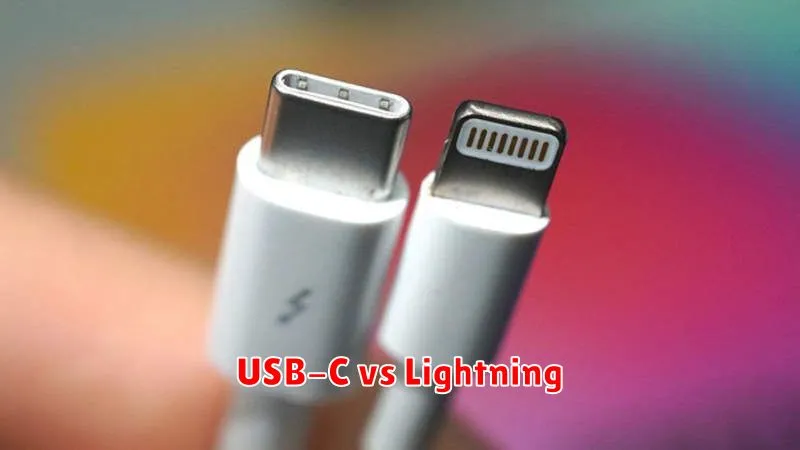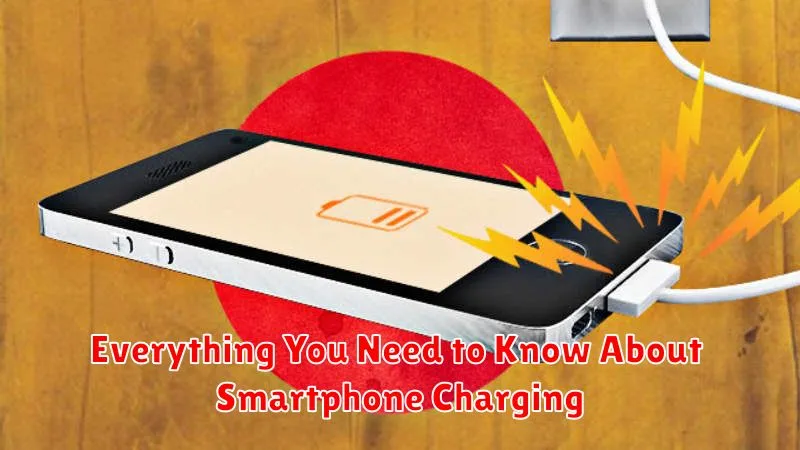In today’s hyper-connected world, our smartphones are indispensable tools, serving as our communication hubs, entertainment centers, and even our digital wallets. Keeping these devices powered up is paramount, and understanding the intricacies of smartphone charging is crucial for optimal performance and longevity. This comprehensive guide will delve into everything you need to know about smartphone charging, covering topics from different charging technologies to best practices for maintaining battery health. Whether you’re looking to optimize your charging speed, extend your battery’s lifespan, or simply understand the science behind smartphone charging, this article will equip you with the necessary knowledge.
From the evolution of smartphone charging cables and adapters to the emergence of wireless charging and fast charging technologies, the landscape of powering our devices has undergone significant transformations. This article will explore the various smartphone charging methods available, discussing the advantages and disadvantages of each. We will also address common concerns about smartphone charging, such as overcharging, optimal charging levels, and the impact of temperature on battery performance. By understanding these fundamental principles, you can make informed decisions about how you charge your smartphone and maximize its overall lifespan and efficiency.
Fast Charging vs Normal Charging
Fast charging and normal charging differ primarily in the amount of power delivered to the battery. Normal charging utilizes a standard power adapter, typically 5W or 10W, resulting in a slower charging process.
Fast charging, conversely, uses a higher voltage and amperage, delivering significantly more power, sometimes exceeding 100W. This allows for a much quicker recharge, often reaching a substantial battery percentage in a short period.
However, there are potential trade-offs. Fast charging can generate more heat, potentially impacting battery longevity over time. While modern smartphones incorporate safety features to mitigate these risks, it’s a factor to consider.
Understanding Wattage and Voltage
Wattage and voltage are key concepts in understanding how fast your smartphone charges. Think of electricity like water flowing through a pipe. Voltage is the pressure of the water, while wattage is the volume of water flowing through the pipe per unit of time.
Wattage, measured in watts (W), represents the power delivered to your phone. A higher wattage means more power, which translates to faster charging. Voltage, measured in volts (V), is the electrical potential difference that pushes the current through the circuit.
These two are related by a third factor: amperage (current), measured in amperes (A). The relationship is expressed by the formula: Wattage (W) = Voltage (V) * Amperage (A).
Wireless Charging Explained
Wireless charging, also known as inductive charging, allows you to charge your smartphone without physically connecting a cable. It uses electromagnetic fields to transfer energy between a charging pad and your phone. Compatibility is key; your phone must support the technology to utilize wireless charging.
The process involves placing your phone on a charging pad connected to a power source. This pad contains a transmission coil that generates an electromagnetic field. A corresponding receiver coil within your phone converts this field back into electricity to charge the battery.
While generally slower than wired charging, wireless charging offers convenience, reducing wear and tear on your charging port.
Is Overnight Charging Harmful?
Leaving your phone plugged in all night used to be a concern due to older battery technology. Modern smartphones utilize lithium-ion batteries and sophisticated power management systems that prevent overcharging. Once the battery reaches 100%, charging stops.
However, keeping a battery at 100% for extended periods can contribute to slight degradation over the long term. This is due to the high voltage state, which can put stress on the battery. While convenient, it is generally recommended to unplug your phone once it’s charged if possible.
Trickle charging, the small amount of power used to maintain 100% while plugged in, is minimal and unlikely to cause significant harm. The overall impact of overnight charging on modern batteries is relatively small.
USB-C vs Lightning

USB-C and Lightning are the two most prevalent charging port standards in modern smartphones. USB-C is an industry-standard connector used by most Android phones and other devices. It offers faster data transfer speeds and charging capabilities compared to older USB standards.
Lightning is Apple’s proprietary connector, used exclusively in iPhones (up to iPhone 14). While it offered advantages over older 30-pin connectors, it is gradually being phased out as Apple adopts USB-C, influenced by EU regulations.
Key differences include their physical shape, data transfer rates, and power delivery capabilities. USB-C is generally considered more versatile due to its wider adoption and faster potential speeds.
Tips to Preserve Battery Health
Maintaining your smartphone’s battery health is crucial for long-term performance. Avoid extreme temperatures, both hot and cold, as they can degrade battery capacity.
Optimized charging practices are also important. Avoid consistently charging to 100% or letting the battery fully deplete to 0%. A partial charge within the 20% to 80% range is ideal.
Reduce background activity by closing unused apps and limiting notifications. Dim your screen brightness and utilize power-saving modes when possible. These practices minimize battery strain and contribute to its longevity.
Using the correct charger designed for your specific smartphone model is also recommended. Counterfeit or incompatible chargers can damage the battery and pose safety hazards.

